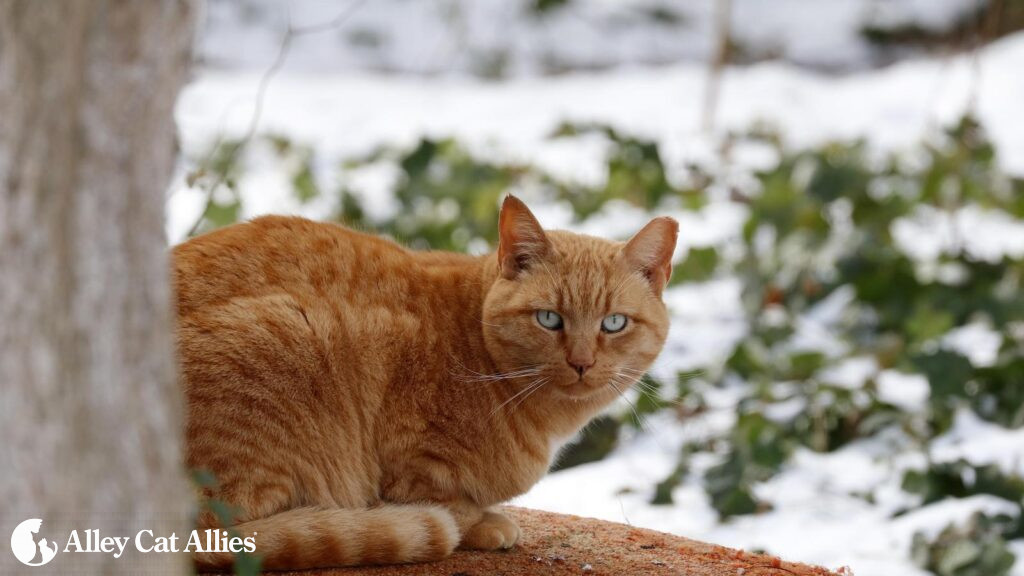It’s getting cold out there! As temperatures drop, it’s important to know: Cats have always lived outdoors and thrived in all varieties of locations, weather conditions, and climates. They are well adapted to their environments and know where to find food and shelter from the elements.
However, there are many ways you can provide some extra support. Following best practices to care for community cats can go a long way toward ensuring their comfort and safety outdoors in the coldest months.
DO NOT bring cats or kittens to animal shelters.
Many shelters lack humane, nonlethal policies and programs. Bringing cats and kittens to shelters where they could be killed is not in their best interest—even when the weather is cold.
Unless there is illness or injury–in which case, consult a veterinarian–allowing cats to remain outdoors is the best way to protect them. There are multiple steps you can take to keep cats warm and safe in their outdoor homes where they belong.
Alley Cat Allies is here to provide lifesaving information! These are our Top 10 Winter Weather Tips for Cats:
- Provide outdoor shelters for community cats
Whether you want to build or buy (building cat shelters is a great family or community activity!), we have shelter ideas, blueprints, and suggestions to get you started.
- Insulate outdoor cat shelters with STRAW, not HAY
Straw repels moisture while hay does not, and cats can burrow into the straw to stay dry and warm. Be sure to keep adding straw throughout the season.
- Use the right bowl
A heated bowl will prevent cats’ water and wet food from freezing. You can also utilize ceramic or plastic bowls that are deep rather than wide and place them in a sunny spot.
- Build a feeding station
A feeding station that keeps bowls insulated and off the ground will also go a long way. We have some feeding station options you can consider.
- Provide fresh food and water
Continue to change out food and water rather than letting leftovers freeze. Another tip: Increase your typical meal portions for cats during the winter. The extra food will help give cats the energy they need to stay warm. Canned or wet food takes the least amount of energy to digest, meaning more energy can be spent staying warm.
- Prepare cats’ outdoor homes for snowstorms
In the event a major weather event like snow accumulation is in the forecast, give cats extra food and water in case you can’t get to the cats for a couple days. Clear snow from the entrances of cats’ shelters after storms so they don’t get snowed in.
- Don’t use salt or chemical melting products or antifreeze
These products can be lethal when licked off paws or ingested from melting puddles. Antifreeze in particular can be attractive to cats and is extremely toxic.
- Always check under the hood of your car for cats
Sometimes, cats will nap under cars or even crawl into them to curl up near a warm engine. Before you turn on your car, look under your it to make sure the coast is clear, and then pop the hood to make sure a cat isn’t resting there.
- Do TNR only if conditions are not dangerous
If it’s too cold outside for you, then it’s probably too cold for cats to be in traps, exposed to the elements, for extended periods of time.
- TNR in the winter is fine—just watch traps at all times
Do not walk away and come back to check traps when doing TNR in winter. Keep an eye on traps at all times so you can move the cats into a temperature-controlled vehicle or building immediately after the trap door closes.


